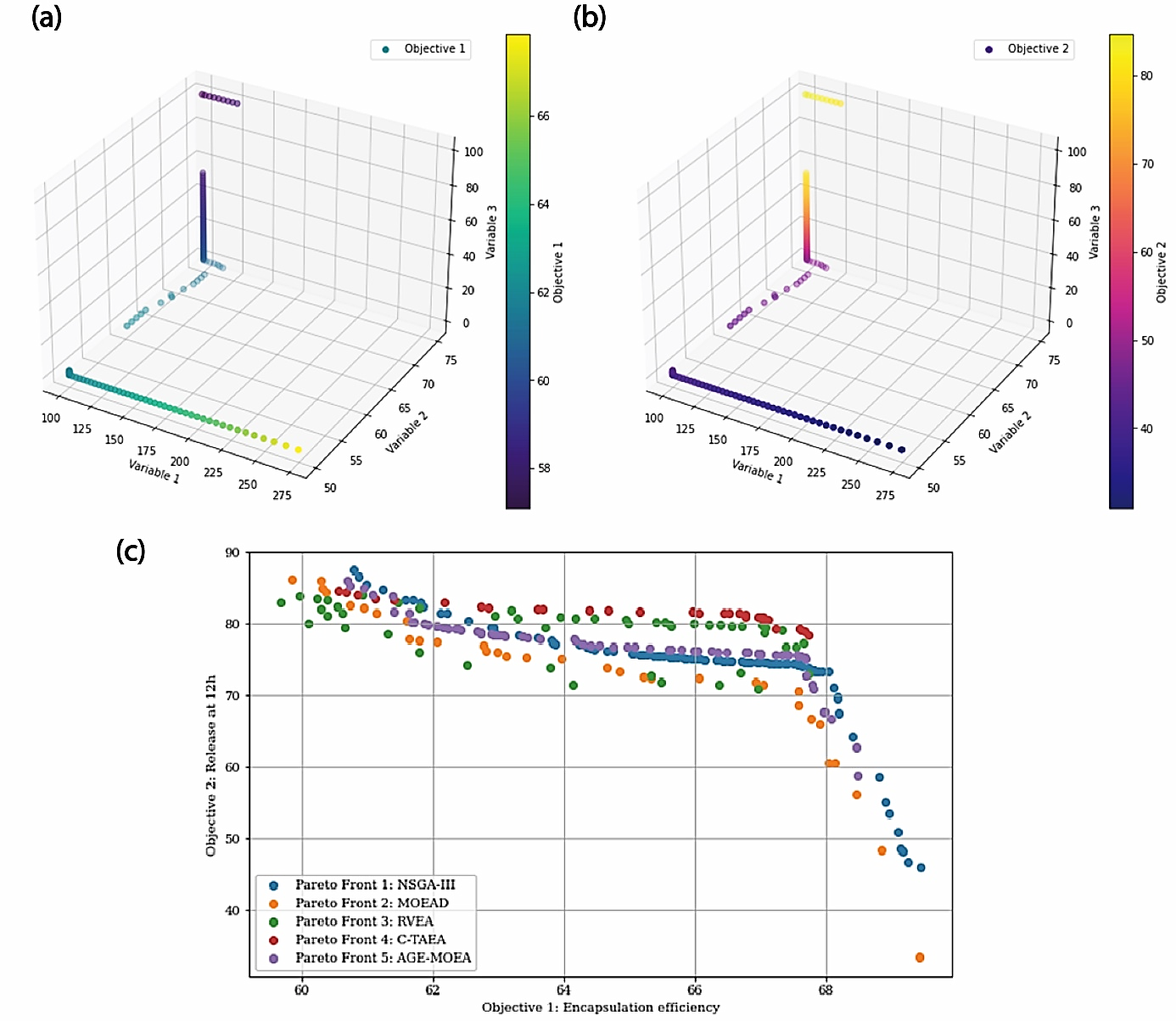Found 1 results
Communication
21 November 2024Trade-offs in Encapsulation Efficiency and Drug Release: A Multi-Objective Optimization Approach
Multi-objective optimization (MOO) techniques are crucial in addressing complex engineering problems with conflicting objectives, particularly in pharmaceutical applications. This study focuses on optimizing a biodegradable micro-polymeric carrier system for drug delivery, specifically maximizing the encapsulation efficiency and drug release of Candesartan Cilexetil antihypertensive drug. Achieving a balance between these two goals is essential, as higher encapsulation efficiency ensures adequate drug loading. In contrast, optimal drug release rates are critical for maintaining bioavailability and achieving therapeutic efficacy. Using response surface models to formulate the problem definition, five prominent MOO algorithms were employed: NSGA-III, MOEAD, RVEA, C-TAEA, and AGE-MOEA. The optimization process aimed to generate Pareto fronts representing compromise solutions between encapsulation efficiency and drug release. The results revealed inherent conflicts between objectives: increasing encapsulation efficiency often came at the cost of reducing the drug release rate. Evaluation of MOO algorithms using performance metrics such as hypervolume, generational distance, inverted generational distance, spacing, maximum spread, and spread metric provided insights into their strengths and weaknesses. Among the evaluated algorithms, NSGA-III emerged as the top performer, achieving a Weighted Sum Method (WSM) score of 82.0776, followed closely by MOEAD with a WSM score of 80.8869. RVEA, C-TAEA, and AGE-MOEA also demonstrated competitive formulation quality, albeit with slightly lower WSM scores. In conclusion, the study underscores the importance of MOO techniques in optimizing pharmaceutical formulations, providing valuable insights for decision-makers in selecting optimal formulations.
